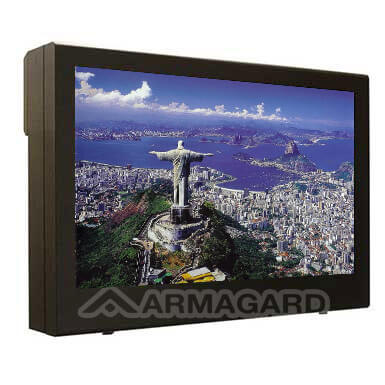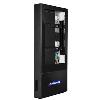Outdoor Digital Signage Gets 'Gold' at the Rio 2016 Olympics

After 306 events, featuring 206 countries and 42 sporting disciplines, held across 37 venues, the Rio 2016 Olympics in Brazil proved to be a huge success for outdoor digital signage. On another note, congratulations to team USA for topping the medals board...
Around the world, outdoor digital signage was used by nations to promote their attendance at the Rio 2016 Olympics. For instance, digital signage was put to use in Australia to reveal the Olympic Team's flagbearer.
Equally, hundreds of digital signage vendors sent screens of all sizes and specifications that featured at the 2016 Rio Olympics and Paralympic games. Displays were used across stadiums and areas surrounding venues for the purposes of brand promotion and televising Olympic events.
It's likely that the use of digital signage outdoors escalated beyond the levels seen at the London 2012 Olympics given that, in just four years, AV technologies have advanced. Meanwhile, installing screens outdoors has become progressively easier, though still not without its challenges.

Outdoor Digital Signage Use in Brazil
In general, digital signage use outdoors in Brazil has boomed, particularly in the last two years, which has everything to do with the 'Samba nation' hosting the 2014 FIFA World Cup. There was already a strong digital signage presence across the country prior to the recent Olympics, particularly across football stadiums, for obvious reasons.

For instance, the Arena da Baixada Stadium in Curitiba, which is the home of the Clube Atlético Paranaense football team, has a staggering 220 digital signage displays in use. They were used to televise games and featured menus for concession stands during the 2014 World Cup and they were most likely in action again to screen Olympic football matches.
Outdoor digital signage in Brazil was already making waves before the Games, and has played a key role in boosting Brazil's economy, especially during the FIFA World Cup, as brands promoted their products and services to football fans from around the world. It's no surprise that it had an even bigger impact during the Rio 2016 Olympics.
Why? Because more than 500,000 tourists descended on Rio, and at various points throughout the event, tourists would have come into contact with outdoor digital signage.
Equally, Digital Out-of-Home (DOOH) advertising is already hitting 60% of Brazil's EAP (Economically Active Population) according to figures published by brasilsignage.com, and ranks as the second most viewed media behind free-to-air TV.
Outdoor digital signage reigned supreme in Rio because of the versatility it gave vendors to reach tourists and locals alike. DOOH can be deployed in a variety of ways as:
- Menu boards
- Wayfinding points
- Self-serving kiosks
- Information stands
- Interactive touchscreen displays

For vendors, the versatility of DOOH attracts big name brands who will pay a premium to advertise content to mass audiences at a major event, hence the reason that there was fierce competition among vendors to win digital signage projects in Brazil ahead of the Olympics. The fact that competition is fierce highlights the significance of DOOH.
The beauty of DOOH at the Rio Olympics is that content could be displayed in multiple global languages and could be made specific to a particular event. For instance, brands advertising golfing equipment could develop content that appealed to golfing fans and stage the content to feature on digital displays at golfing venues in Rio.
The increasing number of outdoor digital signage deployments in Brazil is testament that it's establishing dominance as an advertising medium and, with an international audience descending on Rio for the second time in two years, digital signage played a major part in making the Games a success for organisers, sponsors, advertisers and audiences alike.
Ultimately, while DOOH is still a growing market in Brazil, the Games provided an opportunity for digital signage to increase its influence and take centre stage as the platform that connects audiences with advertisers.
Avoiding Outdoor Digital Signage Downtime in Brazil

However, for DOOH to reign in Rio, it needed to be able to survive Brazil's scorching summer temperatures. Cue the need for outdoor digital signage protection. Protection comes in many forms, but for the purposes of flexibility, an outdoor LCD screen enclosure represented a sound option.
LCD enclosures can accommodate most screen sizes manufactured by the world's leading screen suppliers. Equally, they come equipped with components that will prevent screens from overheating as a result of Brazil's scorching summer temperatures. The single biggest threat to digital signage at this year's Olympics was the heat.
Setting up a digital signage network without protection in sizzling temperatures is like a tourist spending three hours on Copacabana beach without sun cream. The consequences wouldn't have been pretty.
If you're interested in LCD screen protection for the Rio Olympics, call +1-866-434-0807 for a product consultation.















